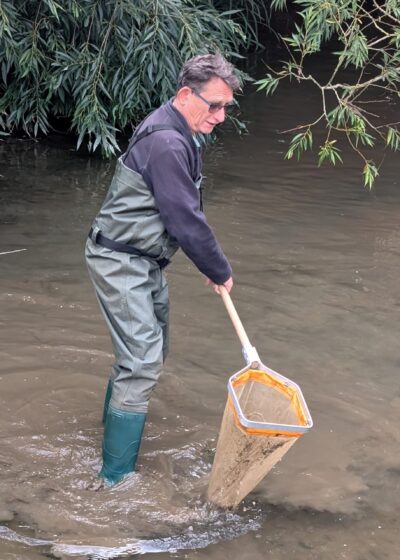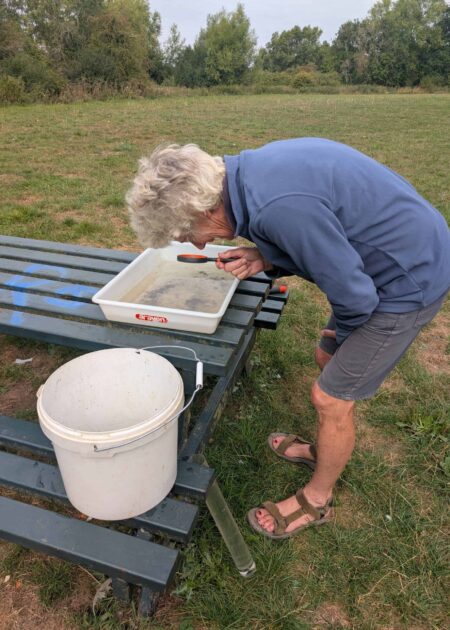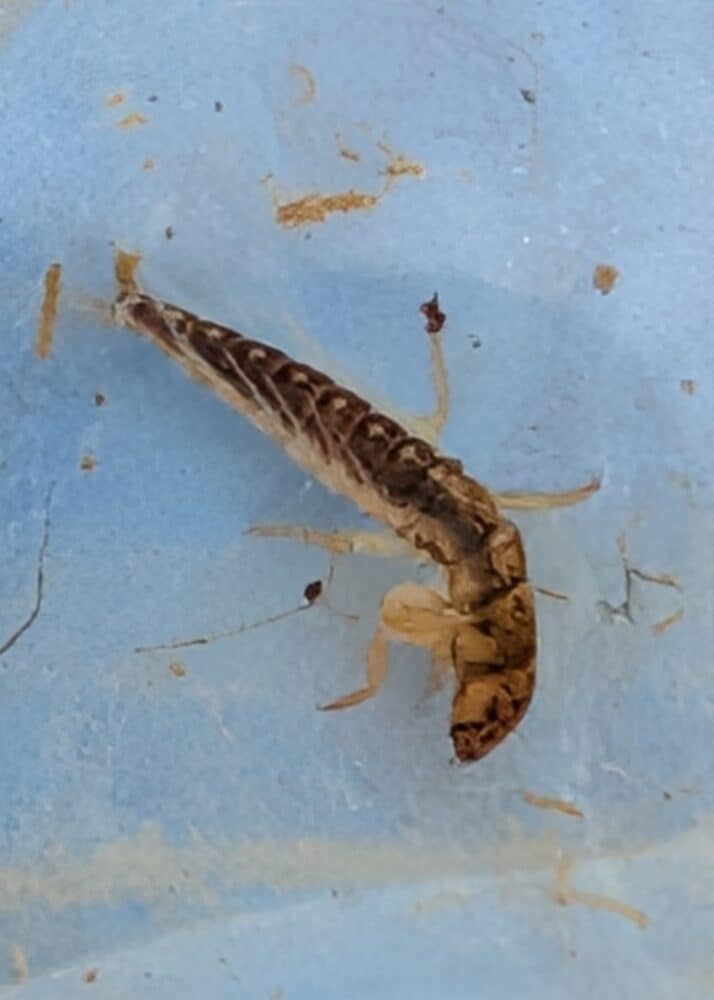Spare a thought for tiny creatures living on the bed of the Evenlode river. Invertebrate populations -already affected by sewage and agricultural pollution – have come under further stress due to this year’s hot, dry summer weather.
“The last few weeks have been extremely tough for river invertebrates particularly in small watercourses, some have even dried up completely”, explains Tony Bostock, Cotswold Hub Coordinator for the Riverfly Partnership, which runs a citizen science monitoring program.
Invertebrates are a vital source of food for fish, birds and river mammals. The classification includes freshwater shrimps and aquatic pre-adult forms of caddis flies and mayflies. Monitoring them is useful for evaluating the impact of pollution on river ecosystems.
The problems caused by the summer weather are evident close to Charlbury.
Sampling near The Mill Field
A survey of invertebrates carried out at a river site near The Mill Field, the town’s main recreation space, on 15th August found few signs of life. None of the six regularly monitored indicator species were found – the first time this has ever happened. The site has been sampled roughly once a month for the last two years by citizen scientist volunteers, organized by the Riverfly Partnership in collaboration with the Evenlode Catchment Partnership.
Additional surveys took place at the same spot a few days later to verify the initial result. The first follow up on 22nd August again found none of the six indicator species to be present. A second follow up on 23rd August was slightly more encouraging. It yielded a handful of mayfly nymphs, an alderfly nymph and a tiny shrimp.
Sustainable Charlbury has provided financial support for nature recovery projects on The Mill Field, including meadow restoration.
River in bad shape
While the Mill Field site never teams with invertebrates, the latest results are a worrying sign that the river is currently in unusually bad shape following several months of high temperatures and very little rain, leading to exceptionally low water levels and stagnant water flow.
These conditions lead to concentrated levels of phosphate and nitrate pollution, making it difficult for invertebrates to survive. The presence of these chemicals adds excessive amounts of nutrients to the water, promoting algal growth and a cycle of ecological boom and bust which ultimately leaves invertebrates deprived of oxygen and smothered in sediment.
Phosphate and nitrate pollution – mainly from sewage outflows and agricultural run-off – has long been a major problem along the Evenlode, as with other rivers in Britain. This summer’s exceptional weather seems to have made things worse, at least temporarily until significant rain and cooler temperatures arrive.
Record phosphate level
Water quality tests, carried out at The Mill Field site at the same time as the invertebrate sampling, underline the scale of the current problems. A phosphate level of between 0.5 and 1 part per million was recorded in August this year, more than ten times greater than before the summer heat in March, and higher than at any other time since monitoring started. Nitrate levels were also high although not as high as on some previous occasions. Phosphate river pollution is mainly associated with sewage while nitrate pollution is more closely linked to agricultural sources, such as chemical fertilizer residues.


